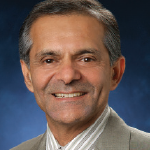Last month, the ACR’s delegation to the American Medical Association (AMA) House of Delegates gathered at the Gaylord National Harbor, Md., for the 2023 Interim Meeting of the AMA House of Delegates.
The AMA House of Delegates meets each June and November, and each meeting brings its own set of urgent and novel issues. At these meetings, the ACR and other specialty societies, along with state medical associations, debate issues and advance resolutions and reports that become official policy and directives for action for the nation’s most prominent and influential medical association. At this November’s Interim meeting, the ACR’s delegation considered more than 100 resolutions and reports and helped shape policy in areas including healthcare workforce and patient access to care and treatment.
On behalf of its members and the rheumatology community, the ACR is able to leverage its representation in the AMA House of Delegates by introducing for consideration new AMA policies and directives to take action. The ACR’s delegation is already beginning to consider potential resolution topics to introduce at the June 2024 House of Delegates Annual Meeting. The ACR and its delegation have taken a leading role in authoring or cosponsoring resolutions over the past several years, including driving resolutions on:
- In-office specialty drug dispensing;
- Copay accumulator policies;
- Complex treatment administration and reimbursement;
- Payer financial incentives to patients for switching treatments;
- Mandatory payment models from CMMI;
- The NIH Public Access Plan;
- Home infusion issues;
- Biosimilar interchangeability;
- Drug pricing issues;
- Private payers and consultation codes;
- Prior authorization and Medicare Advantage; and
- Step therapy reform.
Members of the ACR can reach the delegation and propose topics to advance in resolutions on behalf of the rheumatology community by emailing [email protected].
Advancing Solutions to Pediatric Workforce Challenges
November’s Interim HOD Meeting included resolutions addressing Medicare payments and payment reform, PBMs and other access to treatment issues. Another area of focus was solutions to address the nation’s medical workforce shortages. Of special note were resolutions focused on the need to improve Medicaid payment rates to attract more practitioners into the pediatric subspecialty workforce and the need to improve the path to practice for international medical graduate physicians.
One of the major resolutions supported by the ACR’s delegation during the meeting was Resolution 817, “Expanding AMA Payment Reform Work and Advocacy to Medicaid and Other Non-Medicare Payment Models for Pediatric Health Care and Specialty Populations,” introduced by the American Academy of Pediatrics. The pediatric rheumatology workforce, like other cognitive pediatric subspecialties, continues to experience severe shortages nationally as well as difficulty attracting new physicians. These challenges stem in part from reimbursement rates that are below those for non-specialized pediatricians, which are a focus of the ACR’s workforce efforts. Among other strategies, the ACR will be working with other specialties concerned with pediatric subspecialty workforce shortages and with the AMA to identify and develop approaches to address these challenges. These may include state-level pilot projects and other efforts to improve Medicaid payment rates and incentivize pediatric subspecialists to locate in areas of the most need.


